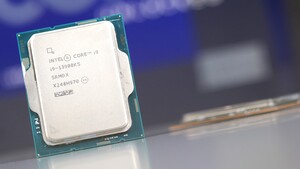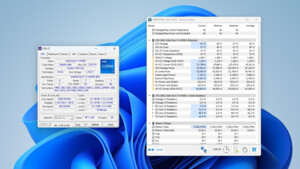weitere infos
http://www.xbitlabs.com/news/cpu/display/20030322034857.html
Choosing the Best AMD Athlon XP Thoroughbred B0 Processor for Overclocking Step by Step
Step 1: Make sure you have AMD Athlon XP Thoroughbred processor with B0 core stepping. To determine it, check the CPU ID of your chip with appropriate software, such as WCPUID by H. Oda. If the CPU ID is 681, then you have the Athlon XP processor based on the Thoroughbred B0 core. If it is not, it means you have something else. The information below seems to be correct only for AMD Athlon XP Thoroughbred processors with B0 core stepping. Note that microprocessors based on Palomino core or Thoroughbred A0 core are rather poor for overclocking.
Step 2: Locate the sticker with the code.
Step 3: Find the third (or second) line in the marking. It should look like this: JIUHB 0302 WPMW.
The first five letters in the line deal with process information (JIUHB in our case). The first letter among five presumably informs us about the location of the core on the wafer. Closer the core was to the centre of the wafer; better overclocking potential is, as the core seems to have more potential for higher speeds. Lower letter is better, as it means that the die was closer to the centre. In general, "A" is better than "J", while K is typically worse than "J", but still has more potential than "R", which is the worst.
The next four digits represent the timeframe when the core was made. The first two digits describe the year, while the other pair represents the week. For instance, our example is marked as "0302", it means that it was made on the second week of this year.
The next alphabet represents another set of data about manufacturing process. Unfortunately, we have no precise information about the meaning of all these letters, but it is believed that the third letter in this alphabet (WPMW, SP1W, XPMW, XPCW, MPMW) represents the number of production run/batch on a particular production date. For instance, A represents the first batch, B means the second one and so on. It cannot be guaranteed, but it is suggested that the first few batches are better for overclocking compared to the last few batches. For example, the latest production runs are marked with numbers, not letters, and are among the worst for overclocking. The source thinks that the last batches are tested on all possible speeds and provided that the chips were not able to run at high frequencies, the possibility of overclocking seems to be very low.
Step 4: Find the second (or the second "part" of the first line) line in the marking. It should look like this: 9367337260464.
As we already told you some days ago, the eighth and ninths digits in this set represent the "originally designated" model number for the CPU. In general it is assumed that the following seems to be correct:
24 = 2400+ (2.0GHz/266MHz FSB);
26 = 2600+ (2.083GHz/333MHz FSB or 2.13GHz/266MHz FSB);
27 = 2700+ (2.17GHz/266MHz FSB);
28 = 2800+ (2.25GHz/266MHz FSB);
30 = 3000+ (No such Thoroughbred CPUs exist).
We have no idea what do the first seven digits mean (9361333260135), but may suggest that they represent the serial number of the wafer. The last four digits (9361333260135) stand for serial number of the processor among its batch. It is believed that lower the number, the higher possibility of overclocking is.
Step 5: Determine the color of the die.
Reddish from all angle of views - Average in overclocking, mostly can run at 2.0GHz (2400+) with 1.65v default voltage, but can perform better with higher Vcore.
Reddish with certain parts of reflective green area - Can either be very good or very bad. The lowest achievements were something like 2.0GHz (2400+) with 1.85v at least, or only 2200MHz with 1.65v.
Reddish core with reflective white under light - Awesome for overclockers. Can run at 2100MHz - 2250MHz using default voltage.
As you see now, it is pretty easy to choose an AMD CPU for overclocking. Since there are loads of such processors on the market, you surely will not have a lot of difficulties with locating them in a local store.





